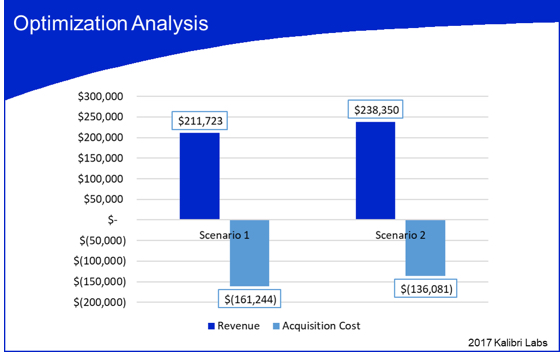When evaluating success and assessing opportunities in the market, hotel companies often use the same competitive set for different segments of guests. However, it is not always the case that a hotel competes with the same set of hotels in all market segments. For example, a large hotel with substantial group business may only compete with other large group hotels for the group segment, where hotel capacity is an important constraint, but it likely competes with a different set of nearby, smaller hotels for leisure business, which is not as constrained by the number of rooms at the property. The choice between using the same comp set for all segments versus customizing each benchmark group based on the type of the guests for each segment can result in significant differences in the conclusions of any competitive analysis.
To illustrate this concept, consider an upscale hotel located in downtown Chicago (the “Subject Property”). Three different comp sets were established by assigning a score to nearby hotels based on several factors, including chain scale, ADR and mix of business. One comp set was optimized for leisure business (“Leisure Set”), another for group business (“Group Set”), and one gave equal weight to both group and leisure business (“Averaged Set”). The resulting competitive sets contained six properties, including the subject property with certain properties appearing in more than one set.
Property Leisure Set Group Set Averaged Set
Subject Propert x x x
Comp Set Property 1 x x x
Comp Set Property 2 x x
Comp Set Property 3 x
Comp Set Property 4 x
Comp Set Property 5 x x x
Comp Set Property 6 x x
Comp Set Property 7 x x
Comp Set Property 8 x
A linear optimization technique was used to assess the Subject Property’s 2016 performance under two scenarios. The first scenario (“Scenario 1”) used the Leisure Set to set constraints for individual non-Group sources of business and the Group Set to set constraints in the model for the Group source of business. The second scenario (“Scenario 2”) used the Average Set to set constraints on all sources of business.

Results from the analysis show that the Subject Property had the potential to increase revenue by approximately US$212,000 under Scenario 1 and US$238,000 under Scenario 2. Although the total revenue increase was higher under Scenario 2, the decrease in total acquisition costs under Scenario 1 was greater than the decrease in total acquisition costs under Scenario 2. Therefore, the Subject Property would experience a greater increase in revenue capture under Scenario 1.[1]
As shown, selecting the right comp sets and comparing specific types of business individually is vital for benchmarking and for optimizing a hotel’s performance. Since a hotel does not compete with the same set of hotels for every channel, it is important that each competitive set is customized to suit the appropriate nature of the guests in each respective channel. It will not only change the outcome of the competitive analysis, but also will lead to more meaningful and tangible results for the subject hotel.
Contributed by Ankush Khullar, data strategy and research senior analyst, Kalibri Labs, Rockville, Maryland
